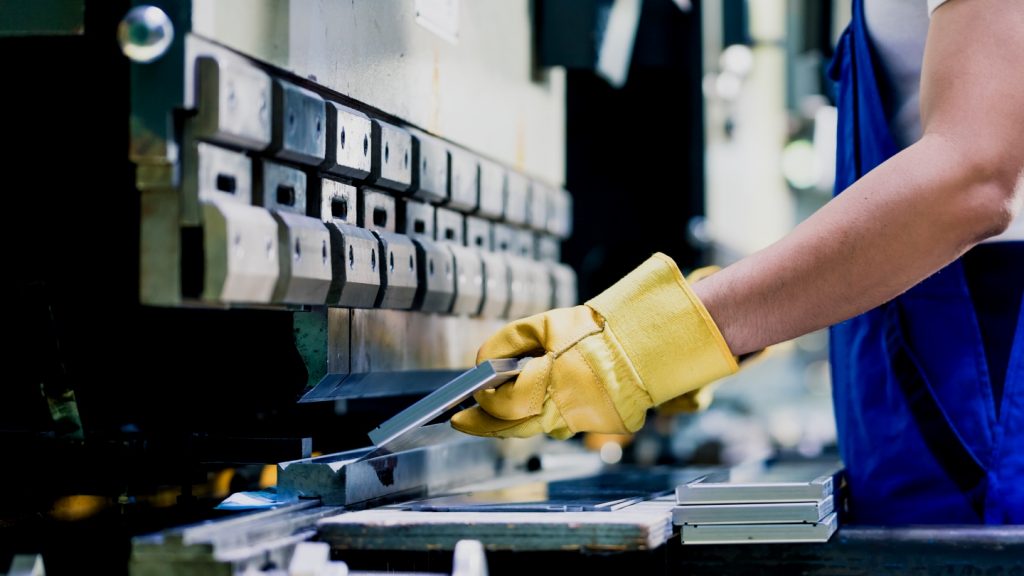Navigating the design to manufacture journey: Scaling Manufacturing

Moving from prototype to scaled production is a significant challenge. As the primary goal of most hardware start-ups is to successfully realise their product, it must be the objective of every decision as they navigate the design to manufacture journey.
Abi Hird from our manufacturing team proposes a broad framework of the factors that you ought to consider as you embark on this process.
In this article, Innovation Caucus PhD Intern Erica Melo De Carvalho and Abi Hird from the KTN Manufacturing team focus on how to integrate scaling up into your thinking along the way.
Understanding volumes is essential
Businesses need to be able to predict volume with as tight a margin as possible to enable the contract manufacturer to optimise costing through the supply chain.
What is your customer willing to spend for the functionality you can offer? What is their vision and aspiration for the product? Do they all want the same number of products and pay the same price? How much of the market can you realistically reach? Have you considered distribution, how you’ll handle returns, customer service and support for the volumes you predict (i.e. are the volumes going to create problems longer term?) These questions will determine production volumes and, in turn, will inform which manufacturing processes are most appropriate.
Start to plan production early in the product design process
The design will need to be optimised for the specific manufacturing process used. This will, in turn, impact upon the final design and could result in changes. Include this consideration early to avoid unanticipated costs and be strategic in your thinking:
- Consider breakeven points of three or four different manufacturing processes and understand how long it will take to break-even for each. Higher quantities and cheaper products tend to have more expensive setup costs. Is what you are offering the customer viable, given the price they are willing to pay? If not, perhaps it’s time to pivot or rethink your proposition. This is definitely something worth considering very early before you commit significant time and resources.
- Mitigate some of the risk and cost in your production by ensuring that, scaling up from low to medium and high volumes, does not require entirely new production processes. Where possible, use the same tooling for low and medium volume runs. You might find that you can increase production on a different process as well as reduce costs for a relatively small per cent increase in setup costs. Breakeven will be a little further down the line, but production will be far more flexible, cheaper, and last longer.
- Once the design is finalised, and before you commit to large production volumes, test your production line and product. Also solve any issues before ordering materials and committing labour time.
- Think about supply chain considerations early. A contract manufacturer can help you optimise your supply chain and use their buying power to get you better deals.
Understand the implication of late-stage changes to design
Late design changes are invariably expensive. Sometimes they can sink a business. As you reach volume manufacturing, your product and production process must be 98% stable. Once a commitment to tooling has been made, changes cannot be introduced.
From the outset, ensure that you have listened to the customer. Test ideas with them. Make sure you are developing something they would be compelled to pay for. Rule of thumb: test with at least 100 customers.
Understand the functionality that is required and how much they are willing to pay for it. We recommend that, where possible, design the product in a way that means functionality is associated with a specific component or system so it can be easily changed, adapted or upgraded. Decoupling functionality is especially important if you have long lead times for development. However, it does require real skill and is one example of where it can be useful to engage with an experienced design consultancy.
Strong relationships with experienced teams are essential
Work with experienced teams to understand the intricacies of each manufacturing process and design the right product, for the right process, in the right material, at the right price.
Skilled design teams will add significant value through design for manufacturing cost savings by optimising for quick assembly, reduced waste, improved quality and consistency, less material use, standardised components etc.
Strategic partners with knowledge in the customer segment, component and manufacturing supply chain and customer facing supply chain and distribution network can be invaluable. One example is the value SONY has added to Raspberry Pi. Based in Pencoed, Wales, the experienced manufacturing team have leveraged economies of scale, their logistics distribution network and customer service support – all fundamental to the global success of their product, Raspberry Pi.
While it is wise to try and find out as much as possible about manufacturing and to consider it early on, do not think you already know all these answers beforehand. Hardware development is a learning process for even the most experienced engineers. Innovation is, by its very nature, uncertain. That’s what makes it so exciting!
You can find more information on scaling manufacturing in our Scaling Manufacturing event video.
We’ve been running a series of weekly webinars – Navigating the Design to Manufacture Journey – during #lockdown, where we engaged with a number of industry experts exploring all aspects of systems thinking from funding and investment to scaling up manufacturing. If you managed to join us for some or all of these webinars, great. If not, you can catch up on recordings from the series and a series of articles about the events here.

